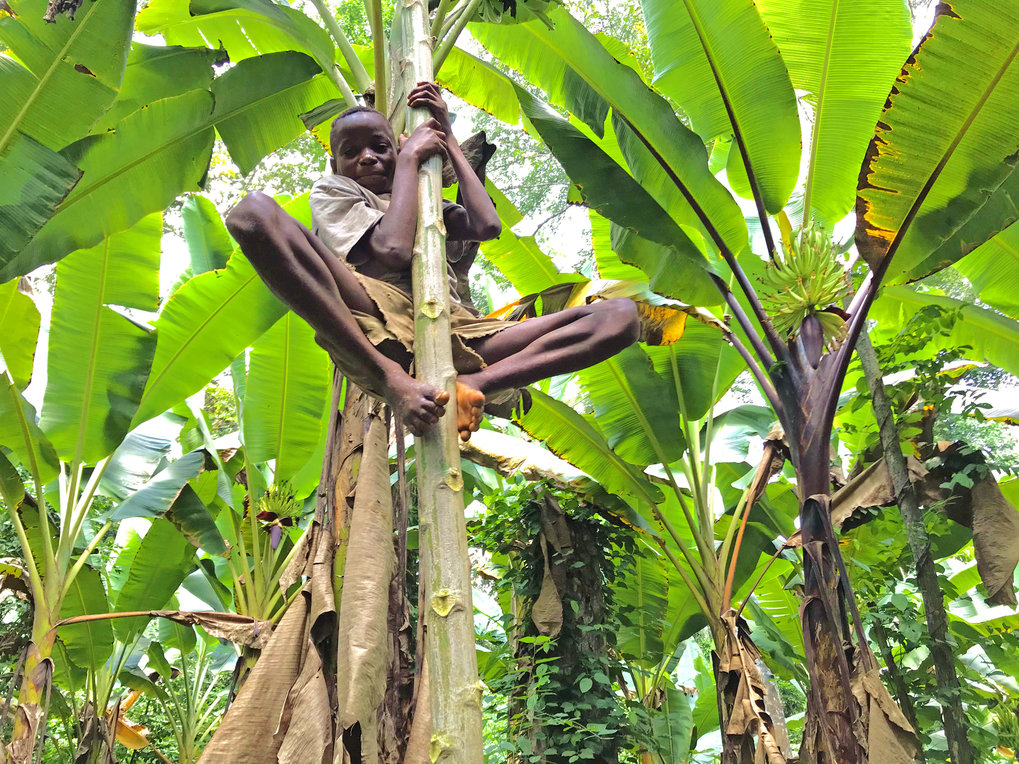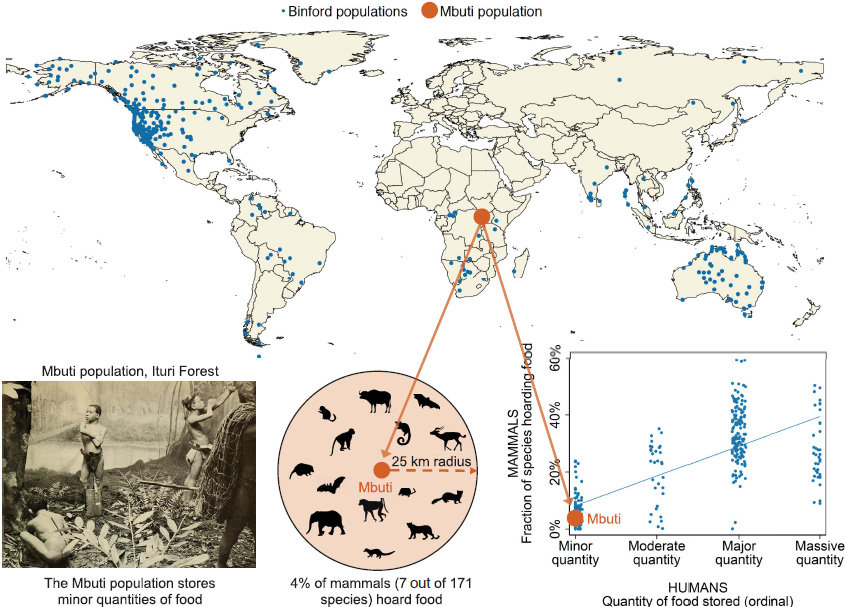Foraging humans, mammals and birds who live in the same place behave similarly
Foraging humans find food, reproduce, share parenting, and even organise their social groups in similar ways as surrounding mammal and bird species, depending on where they live in the world, new research has found. A new study by a team of international researchers shows environmental factors exert an overriding influence on how foraging human populations and non-human species behave, despite their very different backgrounds.

The researchers analysed data from more than 300 locations around the world, observing the behaviours of foraging human populations alongside other mammal and bird species living in the same place. Their findings show that for almost all behaviours, 14 of the 15 investigated, humans were more likely to behave similarly to the majority of other non-human species living in the same place than those elsewhere.
"Previous research has explored how environmental conditions shape the behaviour of closely related species. This is the first time a broad comparative perspective has been used to systematically compare very different species - humans, mammals, and birds - across a wide range of behaviours. Our evidence shows how remarkably pervasive and consistent the effect of the local environment is on behaviour," said author Toman Barsbai, from the University of Bristol and the Kiel Institute for the World Economy. "The similarities are not only present for behaviours directly relating to the environment, such as finding food, where we might expect a clear correlation, but also for reproductive and social behaviours, which might seem less dependent on the local environment."
For example, when obtaining food, there are environments where humans get a significant proportion of their calories from hunting. In these locations it was shown there are much larger proportions of carnivorous mammals and birds than elsewhere. Similar associations were also identified for reliance on fishing, how far to travel to gather food, whether or not to store food, and whether or not to migrate between seasons - with each behaviour found to be more common in humans, other mammals, and birds in some locations than in others.
Local environment influences how to behave

For reproductive behaviour, there are large differences across populations when individuals first reproduce. In some human populations, men on average have their first child when they are 30 years of age or older, whereas in other populations men might be younger than 20. At locations where humans have children later, the local mammals and birds are similarly on average older when they first reproduce than the mammals and birds living in places where humans reproduce early. The study also showed other variables were correlated across species, including the proportion of individuals having multiple partners, how far individuals move to live with new partners, and how likely couples are to divorce.
Regarding social interactions, there are some places in the world where offspring care is more equally shared between parents than in other places, places where group sizes are larger, and places where social classes, meaning some individuals are more dominant, are more common in both humans and non-human species.
The study's findings strongly indicated these behavioural similarities were associated with the local environment. Knowing the environmental conditions of a place allowed the researchers to predict what behaviours to expect there. However, it is not yet clear which environmental factors are of particular importance for specific behaviours or what the mechanisms are linking them.
Similar behaviours among unrelated species

"We were surprised these associations appeared across humans, mammals, and birds," said author Dieter Lukas from the Max Planck Institute for Evolutionary Anthropology in Germany. "Different species could be expected to sense and interact with their environments in very different ways. Even if they end up with the same behaviour, they might have gotten there through different paths. In particular, the flexibility that allows humans to adapt behaviour to environments around the world is probably facilitated by relying on learning from other people and building on this information over generations."
The study focused on human populations who obtain most of their food by foraging in the environment where they live. "It would be interesting to see how many of these environmental restrictions shape other societies where individuals get food through agricultural specialisation and trading", said author Andreas Pondorfer from the University of Bonn and the Technical University of Munich in Germany. "Agricultural intensification is often thought to buffer humans from the environment. Nevertheless, individuals in these populations might not be as buffered as we think and behaviours might still reflect adaptations that occurred before the adoption of agriculture."






